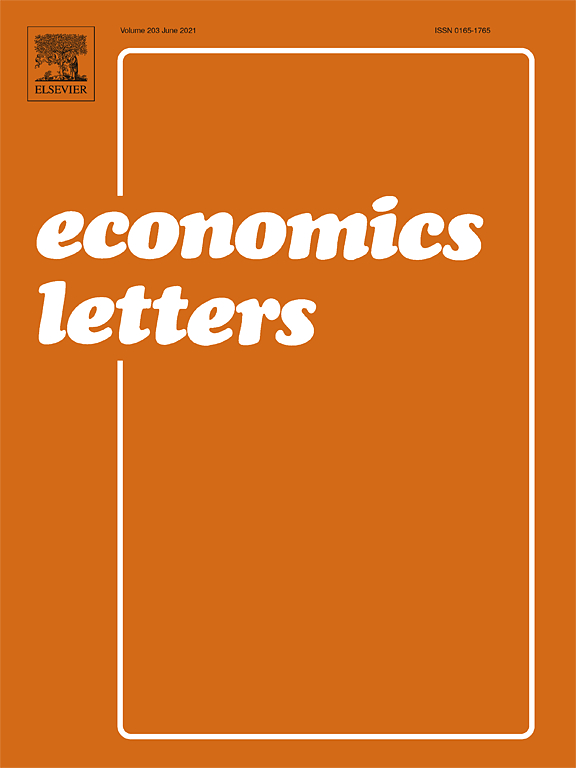
Global Food Prices and Monetary Policy in an Emerging Market Economy: The Case of India
in: Journal of Asian Economics, 2016
Abstract
This paper investigates a perception in the political debates as to what extent poor countries are affected by price movements in the global commodity markets. To test this perception, we use the case of India to establish in a standard SVAR model that global food prices influence aggregate prices and food prices in India. To further analyze these empirical results, we specify a small open economy New-Keynesian model including oil and food prices and estimate it using observed data over the period 1996Q2 to 2013Q2 by applying Bayesian estimation techniques. The results suggest that a big part of the variation in inflation in India is due to cost-push shocks and, mainly during the years 2008 and 2010, also to global food price shocks, after having controlled for exogenous rainfall shocks. We conclude that the inflationary supply shocks (cost-push, oil price, domestic food price and global food price shocks) are important contributors to inflation in India. Since the monetary authority responds to these supply shocks with a higher interest rate which tends to slow growth, this raises concerns about how such output losses can be prevented by reducing exposure to commodity price shocks.

The Diablo 3 Economy: An Agent Based Approach
in: Computational Economics, No. 2, 2016
Abstract
Designers of MMOs such as Diablo 3 face economic problems much like policy makers in the real world, e.g. inflation and distributional issues. Solving economic problems through regular updates (patches) became as important to those games as traditional gameplay issues. In this paper we provide an agent framework inspired by the economic features of Diablo 3 and analyze the effect of monetary policy in the game. Our model reproduces a number of features known from the Diablo 3 economy such as a heterogeneous price development, driven almost exclusively by goods of high quality, a highly unequal wealth distribution and strongly decreasing economic mobility. The basic framework presented in this paper is meant as a stepping stone to further research, where our evidence is used to deepen our understanding of the real-world counterparts of such problems. The advantage of our model is that it combines simplicity that is inherent to model economies with a similarly simple observable counterpart (namely the game environment where real agents interact). By matching the dynamics of the game economy we can thus easily verify that our behavioral assumptions are good approximations to reality.

Real Effective Exchange Rate Misalignment in the Euro Area: A Counterfactual Analysis
in: Review of International Economics, No. 1, 2016
Abstract
The European debt crisis has revealed severe imbalances within the Euro area, sparking a debate about the magnitude of those imbalances, in particular concerning real effective exchange rate misalignments. We use synthetic matching to construct a counterfactual economy for each member state in order to identify the degree of these misalignments. We find that crisis countries are best described as a combination of advanced and emerging economies. Comparing the actual real effective exchange rate with those of the counterfactuals gives evidence of misalignments before the outbreak of the crisis: all peripheral countries appear strongly and significantly overvalued.

Financial Constraints on Growth: Comparing the Balkans to Other Transition Economies
in: Eastern European Economics, No. 4, 2015
Abstract
This article applies an adjusted growth diagnostic approach to identify the currently most binding constraint on financing growth in the West Balkan countries. Since this group of economies faces both structural and systemic transformation problems, the original supply-side approach might not be sufficient to detect the most binding constraint. The results of the analysis indicate that the binding constraint on credit and investment growth in the region is the high and increasing share of nonperforming loans, primarily in the household sector, due to policy failures. This article compares the Balkan countries to a group of advanced transition economies. Single-country and panel regressions indicate that demand-side factors do not play a constraining role on growth in the West Balkan countries, but they do in the advanced transition economies.

Risk and Return - Is there an Unholy Cycle of Ratings and Yields?
in: Economics Letters, 2015
Abstract
After every major financial crisis, the question about the responsibility of the rating agencies resurfaces. Regarding government bonds, the most frequently voiced concern targeted “unreasonably” bad ratings that might trigger capital flights and increasing risk premia which sanction further rating downgrades. In this paper we develop a multivariate, nonparametric version of the Pesaran type cointegration model that allows for nonlinearities, to show that a unique equilibrium between ratings and sovereign yields exists. Therefore, we have to reject the concern that there is an unholy cycle leading to certain default in the long run.



